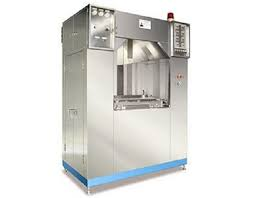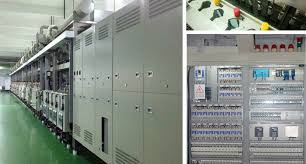 English
English Español
Español  Português
Português  русский
русский  Français
Français  日本語
日本語  Deutsch
Deutsch  tiếng Việt
tiếng Việt  Italiano
Italiano  Nederlands
Nederlands  ภาษาไทย
ภาษาไทย  Polski
Polski  한국어
한국어  Svenska
Svenska  magyar
magyar  Malay
Malay  বাংলা ভাষার
বাংলা ভাষার  Dansk
Dansk  Suomi
Suomi  हिन्दी
हिन्दी  Pilipino
Pilipino  Türkçe
Türkçe  Gaeilge
Gaeilge  العربية
العربية  Indonesia
Indonesia  Norsk
Norsk  تمل
تمل  český
český  ελληνικά
ελληνικά  український
український  Javanese
Javanese  فارسی
فارسی  தமிழ்
தமிழ்  తెలుగు
తెలుగు  नेपाली
नेपाली  Burmese
Burmese  български
български  ລາວ
ລາວ  Latine
Latine  Қазақша
Қазақша  Euskal
Euskal  Azərbaycan
Azərbaycan  Slovenský jazyk
Slovenský jazyk  Македонски
Македонски  Lietuvos
Lietuvos  Eesti Keel
Eesti Keel  Română
Română  Slovenski
Slovenski
PCB hot air leveling technology
2023-03-23
PCB hot air leveling technology
Hot air leveling technology is a relatively mature technology, but because its process is in a high temperature and high pressure dynamic environment, the quality is difficult to control and stabilize. This paper will introduce some experience of hot air leveling process control.

Hot air leveling solder coating HAL (commonly known as tin spraying) is a kind of post-process processing technology widely used by circuit board factories in recent years. It is actually a process that combines dip welding and hot air leveling to coat eutectic solder in the metallized hole of printed board and printed wire. The process is to first dip the printed board with flux, then dip in the molten solder coating, and then pass between the two air knife, with the hot compressed air in the air knife to blow off the excess solder on the printed board, and eliminate the excess solder in the metal hole, so as to get a bright, flat and uniform solder coating.
The most outstanding advantages of hot air leveling for solder coating are that the composition of the coating remains unchanged, the edges of the printed circuit can be fully protected, and the thickness of the coating can be controlled by the wind knife; The coating and the base copper make metal bonding, good wettability, good weldability, corrosion resistance is also very good. As the post-process of the printed board, its advantages and disadvantages directly affect the appearance of the printed board, corrosion resistance and customer's welding quality. How to control its process, is more concerned about the problem of the circuit board factory. Here we talk about the most widely used vertical hot air leveling process control of some experience.
一、the choice and use of flux
The flux used for hot air leveling is a special flux. Its function in hot air conditioning is to activate the exposed copper surface on the printed board, improve the wettability of solder on the copper surface; Ensure that the laminate surface does not overheat, provide protection for solder to prevent oxidation of solder when cooled after leveling, and prevent solder from sticking to the solder resistance coating to prevent solder from bridging between pads; The spent flux cleans the surface of the solder, and the solder oxide is discharged along with the spent flux.
The special flux used for hot air leveling must have the following characteristics:
1、It must be water-soluble flux, biodegradable, non-toxic.
Water-soluble flux is easy to clean, less residue on the surface, will not form ion pollution on the surface; Biodegradation, without special treatment can be discharged, to meet the requirements of environmental protection, the harm to the human body is greatly reduced.
2、 It has good activity
In terms of reactivity, the ability to remove the oxide layer from the copper surface to improve the wettability of the solder on the copper surface, an activator is usually added to the solder. In the selection, both to take into account good activity, but also to consider the minimum corrosion of copper, the purpose is to reduce the solubility of copper in the solder, and reduce smoke damage to the equipment.
The activity of flux is mainly reflected in the tin capacity. Because the active substance used by each flux is not the same, its activity is not the same. High activity flux, dense pads, patches and other good tin; On the contrary, it is easy to appear on the surface of the exposed copper phenomenon, the activity of the active substance is also reflected in the tin surface brightness and smoothness.
3、 Thermal stability
Prevent green oil and base material from high temperature impact.
4、To have a certain viscosity.
Hot air leveling for flux requires a certain viscosity, viscosity determines the fluidity of flux, in order to make the solder and laminate surface to be fully protected, flux must have a certain viscosity, flux solder with small viscosity is easy to adhere to the surface of the laminate (also known as hanging tin), and easy to produce Bridges in dense places such as IC.
5、Suitable acidity
High acidity of flux before spraying plate is easy to cause the edge of welding resistance layer peeling, spraying plate after its residues for a long time easy to cause tin surface blackening oxidation. The general flux PH value is 2. 5-3. Five or so.
Other performance is mainly reflected in the influence of operators and operating costs, such as bad smell, high volatile substances, smoke, unit coating area, manufacturers should be selected on the basis of the experiment.
During the trial, the following performance can be tested and compared one by one:
1. Flatness, brightness, plug hole or not
2. Activity: select fine dense patch circuit board, test its tin capacity.
3. The circuit board coated with flux to prevent 30 minutes, after washing with tape test green oil stripping.
4. After spraying the plate, place it for 30 minutes and test whether the tin surface becomes black.
5. Residue after cleaning
6. Dense IC bit is connected.
7. Single panel (glass fiber board, etc.) on the back of hanging tin.
8. Smoke,
9. Volatility, odor size, whether to add thinner
10. There is no foam when cleaning
.
二、 Control and selection of hot air leveling process parameters
Hot air leveling process parameters include solder temperature, dip welding time, air knife pressure, air knife temperature, air knife Angle, air knife spacing and PCB rising speed, etc. The following will discuss the influence of these process parameters on the quality of the printed board.
1. Tin immersion time:
The leaching time has a great relationship with the quality of solder coating. During immersion welding, a layer of metal compound IMC is formed between the copper base and tin in the solder, and a solder coating is formed on the wire. The above process generally takes 2-4 seconds, in this time can form a good intermetallic compound. The longer the time, the thicker the solder. But too long time will make the printed board base material stratification and green oil bubbling, time is too short, it is easy to produce semi-immersion phenomenon, resulting in local tin white, in addition to easy to produce tin surface rough.
2.Tin tank temperature:
The common solder used for PCB and electronic components is lead 37 / tin 63 alloy, which has a melting point of 183℃. The ability to form intermetallic compounds with copper is very small at solder temperatures between 183℃ and 221℃. At 221℃, the solder enters the wetting zone, which ranges from 221℃ to 293℃. Considering that the plate is easy to damage at high temperature, so the solder temperature should be selected a little lower. Theoretically, it is found that 232℃ is the optimum welding temperature, and in practice, 250℃ is the optimum temperature.
3. Air knife pressure:
Too much solder remains on the dip welded PCB and almost all the metallized holes are blocked by solder. The function of the wind knife is to blow off the excess solder and conduct the metallized hole, without reducing the size of the metallized hole too much. The energy used for this purpose is provided by the wind knife pressure and flow rate. The higher the pressure, the faster the flow rate, the thinner the solder coating. Therefore, blade pressure is one of the most important parameters of hot air leveling. Usually the wind knife pressure is 0. 3-0. 5 mpa.
The pressure before and after the wind knife is generally controlled to be large at the front and small at the back, and the pressure difference is 0. 5 mpa. According to the distribution of the geometry on the board, the pressure of the front and rear air knife can be adjusted appropriately to ensure that the IC position is flat and the patch has no protrusions. Refer to the factory manual for specific value.
4. Air knife temperature:
The hot air flowing from the air knife has little effect on the printed board and little effect on the air pressure. But raising the temperature inside the blade helps the air expand. Therefore, when the pressure is constant, increasing the air temperature can provide larger air volume and faster flow rate, so as to produce larger leveling force. The temperature of the air knife has a certain effect on the appearance of the solder coating after leveling. When the temperature of the wind knife is lower than 93℃, the coating surface darkens, and with the increase of air temperature, the darkening coating tends to reduce. At 176℃, the dark appearance disappeared completely. Therefore, the lowest temperature of the wind knife is not less than 176℃. Usually in order to achieve good tin surface flatness, air knife temperature can be controlled between 300℃ - 400℃.
5. Air knife spacing:
When the hot air in the air knife leaves the nozzle, the flow rate slows down, and the degree of slowing down is proportional to the square of the distance between the air knife. Therefore, the greater the spacing, the lower the air velocity, the lower the leveling force. The spacing of air blades is generally 0. 95-1. 25 cm. The spacing of the wind knife should not be too small, otherwise there will be friction on the printed board which is not good for the board surface. The distance between the upper and lower blades is generally kept at about 4mm, too large is prone to solder spatter.
6. Air knife Angle:
The Angle at which the blade blows the plate affects the thickness of the solder coating. If the Angle is not adjusted properly, the solder thickness on both sides of the printed board will be different, and molten solder splash and noise may also be caused. Most of the front and rear air knife Angle is adjusted to 4 degrees downward tilt, slightly adjusted according to the specific plate type and plate surface geometric distribution Angle.
7. Printed board rising speed:
Another variable related to hot air leveling is the speed at which the blades pass between them, the speed at which the transmitter rises, which affects the thickness of the solder. Slow speed, more air blows to the printed board, so the solder is thin. On the contrary, the solder is too thick, or even plug holes.
8. Preheating temperature and time:
The purpose of preheating is to improve flux activity and reduce thermal shock. The general preheating temperature is 343℃. When preheated for 15 seconds, the surface temperature of the printed board can reach about 80 ℃. Some hot air leveling without preheating process.
Three, solder coating thickness uniformity
The thickness of the solder covered by hot air leveling is essentially uniform. But with the change of the printed wire geometry, the leveling effect of the wind knife on the solder also changes, so the thickness of the solder coating of hot air leveling also changes. Usually, printed wire parallel to the leveling direction, the resistance to air is small, the leveling force is large, so the coating is thin. Printed wire perpendicular to the leveling direction, the resistance to air is large, the leveling effect is small, so the coating is thicker, and the solder coating in the metallized hole is also uneven. It is very difficult to obtain a completely uniform and flat tin surface because solder is immediately raised from a high temperature tin furnace in a dynamic environment of high pressure and high temperature. But through the adjustment of parameters can be as smooth as possible.
1.Choose good activity flux and solder
Flux is the main factor of the smoothness of the tin surface. The flux with good activity can get a relatively smooth, bright and complete tin surface.
Solder should choose lead tin alloy with high purity, and regularly carry out copper bleaching treatment to ensure that the copper content is 0. Below 03% on workload and test results.
2. Equipment adjustment
Air knife is a direct factor to adjust the flatness of tin surface. Air knife Angle, air knife pressure and pressure difference change before and after, air knife temperature, air knife distance (vertical distance, horizontal distance) and lifting speed will have a great influence on the surface. For different plate types, their parameter values are not the same, in some advanced technology of tin spraying machine equipped with a microcomputer, the various plate types of parameters stored in the computer for automatic adjustment.
The air knife and guide rail are cleaned regularly, and the air knife gap residue is cleaned every two hours. When the production is large, the cleaning density will increase.
3. Pretreatment
Microetching also has great influence on the flatness of tin surface. If the depth of micro-etching is too low, it is difficult for copper and tin to form copper and tin compounds on the surface, resulting in local tin surface roughness. Poor stabilizer in micro-etching solution leads to fast and uneven copper etching speed, and also causes uneven tin surface. APS system is generally recommended.
For some plate types, baking plate pretreatment is sometimes needed, which will also have a certain influence on tin leveling.
The picture
4. Pre-process control
Because hot air leveling is the last treatment, many previous processes will have a certain impact on it, such as developing not clean will cause tin defects, strengthen the control of the previous process, can greatly reduce the problems in hot air leveling.



